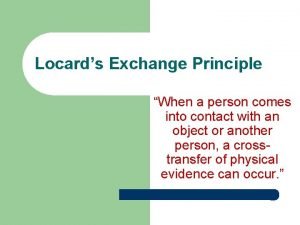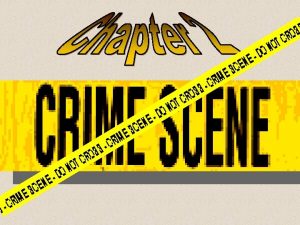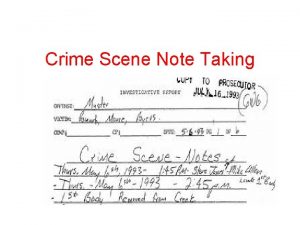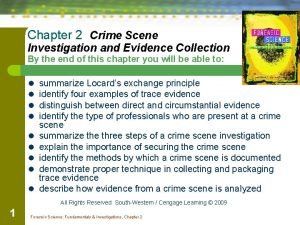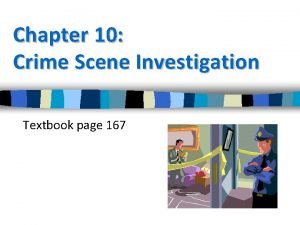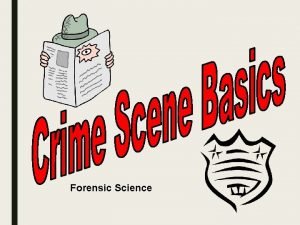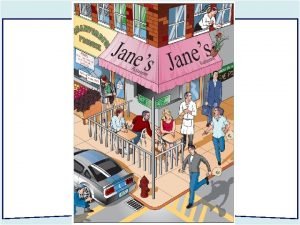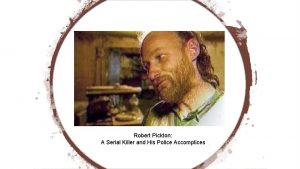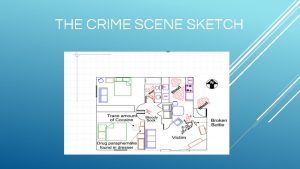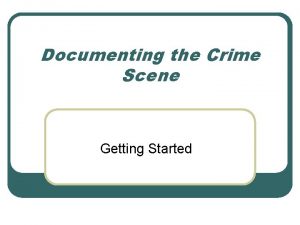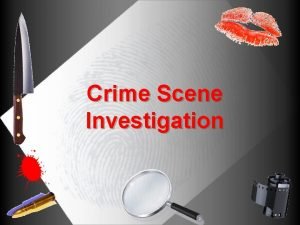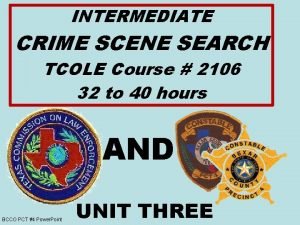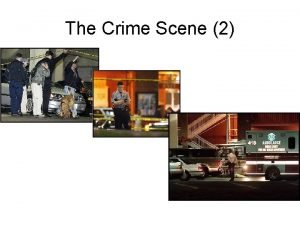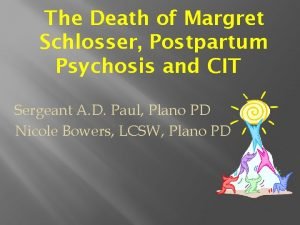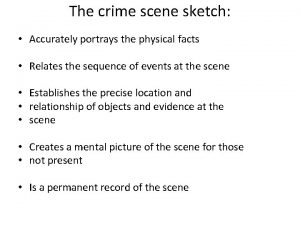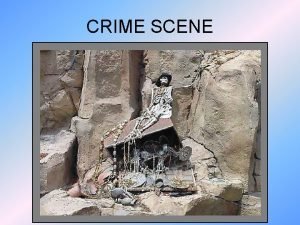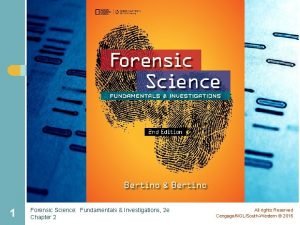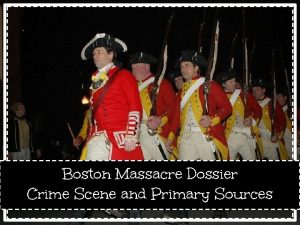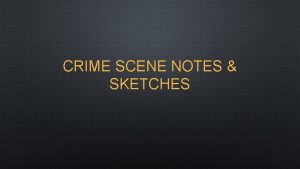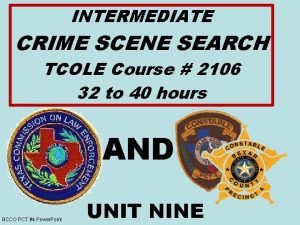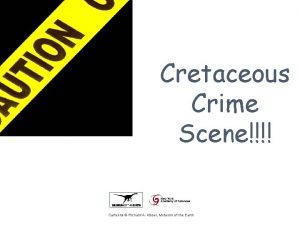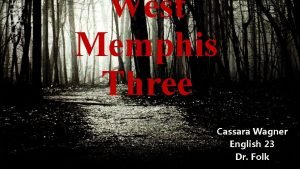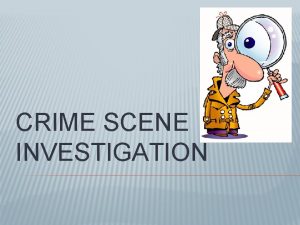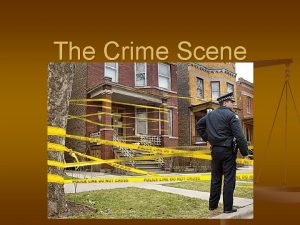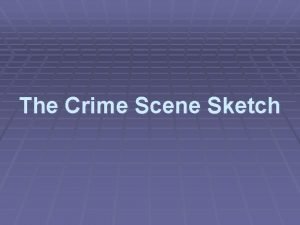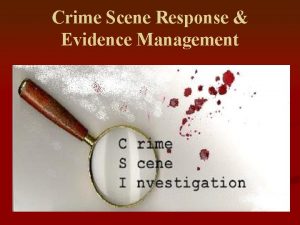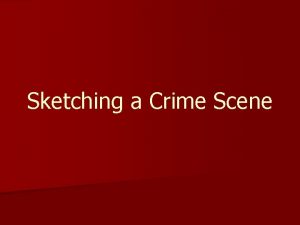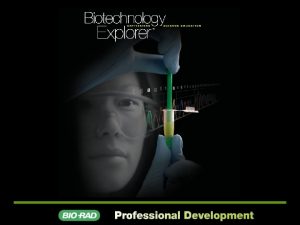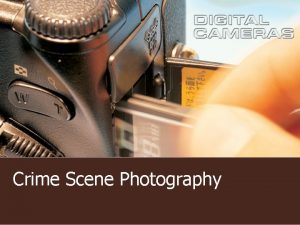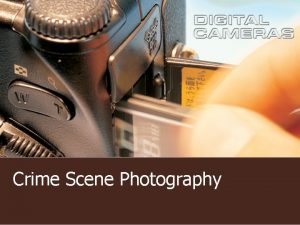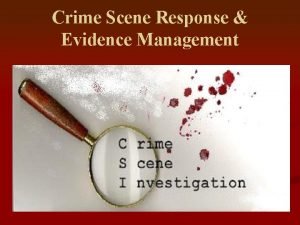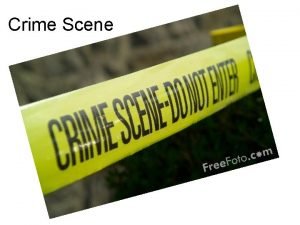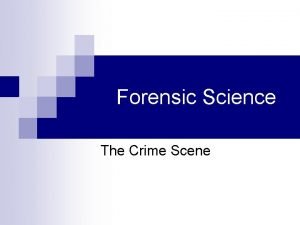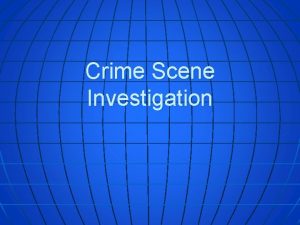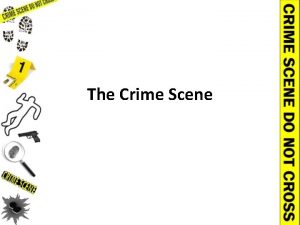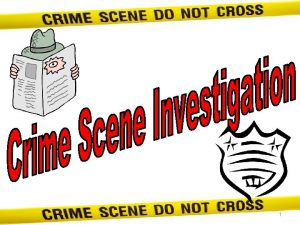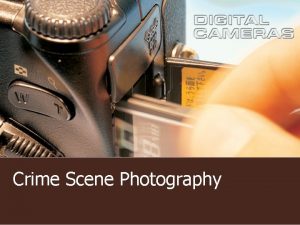The Crime Scene Locards Principle n n n


























- Slides: 26

The Crime Scene


Locard’s Principle n n n Dr. Edmond Locard Director of the world’s first forensic lab in France Came up with the idea that when a person comes into contact with an object or another person, a cross-transfer of physical evidence can occur.

2 Main Types of Evidence n n Direct Circumstantial

Evidence n n Direct evidence Circumstantial evidence Trace evidence n Class evidence n Individual evidence n

Direct Evidence n n n Consists of firsthand observations In court, this evidence involves testimony by a witness about what that witness personally saw, heard, or did. Examples: Eyewitness accounts n Police dashboard video n Confessions n

Circumstantial Evidence n n Indirect evidence that can be used to imply fact but does not directly prove it May provide a link between a crime scene and a suspect Only suspect and victim actually see it left at crime scene Can be physical or biological

Circumstantial Evidence Examples: Finding a suspect’s gun at the site of a shooting n Biological evidence: n n n Body fluids, hair, plant parts, and natural fibers Physical evidence: n Fingerprints, footprints, shoe impressions, tire impressions, bullets, and tool marks

Trace Evidence n n n Type of Circumstantial evidence Physical transfer of material Examples: n n n n Hair Fingerprints Soil Blood Kleenex Fiber Glass Paint chips

Class Evidence n n Narrows an identity to a group of persons or things Cannot specify a single person Only excludes people that do not fit the category Examples: Blood types n Hair color n Common fibers n Shoe prints n

Individual Evidence n n Narrows identity to a single person or thing Examples: DNA n Complete fingerprints(not partials) n Tool marks n Anything torn or broken and left at the scene n

5 S’s of Crime Scene Investigation Securing the scene n Separating the witnesses n Scanning the scene n Sketching and photograph the scene n Searching and collecting of evidence n

Securing the Scene n n n The most important job at a crime scene Performed by the first officer at the scene, called the first responder Safety of all individuals in first priority Preservation of evidence is second Finally record the scene

Separate the witnesses n n Separation prevents them talking to each other Each witness will be asked about the crime scene and what they observed

Scan the Scene n n Determine if and where photos should be taken Determine if there may be a secondary crime scene Person killed at a party (primary scene) n Dumped in a lake (secondary scene) n

Sketching the Scene n n n First is a Rough Sketch done at the scene Must be accurate and to scale Note body, evidence, doorways, windows, walls, trees, cars, and movable objects Distances should be measured and recorded Case number, date, location, and time should also appear on the sketch

Rough Sketch

Final Sketch n n Usually done by a computer Presented in court

Photographing the Crime Scene n Photograph: All evidence n Doors and windows n Anything out of the ordinary n

Searching and Collecting Evidence n n Must be properly packaged, sealed, and labeled Dry evidence - placed in a paper bindle, put into a plastic bag, sealed with tape, labeled Wet evidence - placed in a paper bag to allow drying, then treated like dry evidence When bag is sealed, person must sign their name across the seal

Making a paper bindle n n Fold the paper into thirds both directions so you end up with 9 rectangles Place your evidence in the middle and fold paper around it

Collecting Evidence n Evidence Label

Chain of Custody n n n Must be attached to evidence container Starts with person who finds evidence The next person to use or analyze the evidence must fill out a label Ensures evidence is handled correctly If it is not handled correctly, can be traced to who’s responsible

Crime Scene Reconstruction Crime scene reconstruction involves: n forming a hypothesis n of the sequence of events n from before the crime was committed n BEWARE of staged crimes (cover ups)

Staged Crime Scenes When the lab results do not match up with the testimony of witnesses, it can mean the crime was staged; common examples include: § Staging a fire—to cover bankruptcy. § Staging a suicide—to cover a murder. § Staging a burglary—to collect insurance money.

Staged Crime Scenes To help determine whether a crime scene was staged, consider: n Whether the type of wound found on the victim matches the weapon employed. n Whether the wound could have been easily selfinflicted. n The mood and actions of the victim before the event. n The mood and actions of a suspect before the event.
 Locard's exchange principle diagram
Locard's exchange principle diagram Example of rough sketch
Example of rough sketch Note taking crime scene investigation
Note taking crime scene investigation Summarize locard's principle of exchange
Summarize locard's principle of exchange Crime scene search patterns examples
Crime scene search patterns examples Semen collection bags
Semen collection bags Crime scene
Crime scene Picktona
Picktona Cross projection method sketching
Cross projection method sketching Crime scene vocabulary
Crime scene vocabulary Sketch all serious crime and crash scenes:
Sketch all serious crime and crash scenes: Small amounts of trace evidence can be conveniently
Small amounts of trace evidence can be conveniently 2106 crime scene investigation
2106 crime scene investigation Crime scene 2
Crime scene 2 Margaret schlosser cause of death
Margaret schlosser cause of death A crime scene sketch should include
A crime scene sketch should include Corpus delicti
Corpus delicti Crime scene sketch examples
Crime scene sketch examples Datum point forensics
Datum point forensics Boston massacre csi
Boston massacre csi Finished sketch crime scene
Finished sketch crime scene Tcole 2106
Tcole 2106 Graphsketch
Graphsketch Crime scene reconstruction definition
Crime scene reconstruction definition Cretaceous crime scene
Cretaceous crime scene Wm3 autopsy photos
Wm3 autopsy photos Tcole 2106
Tcole 2106
